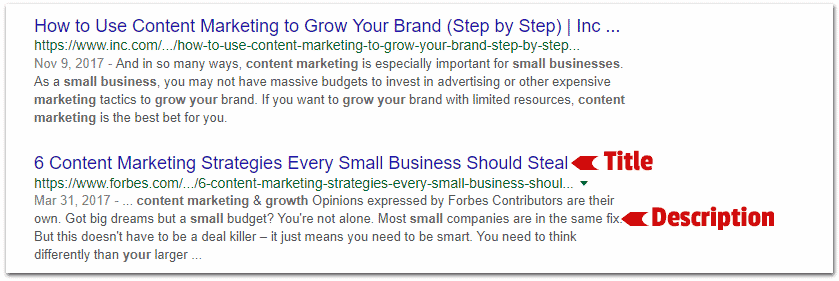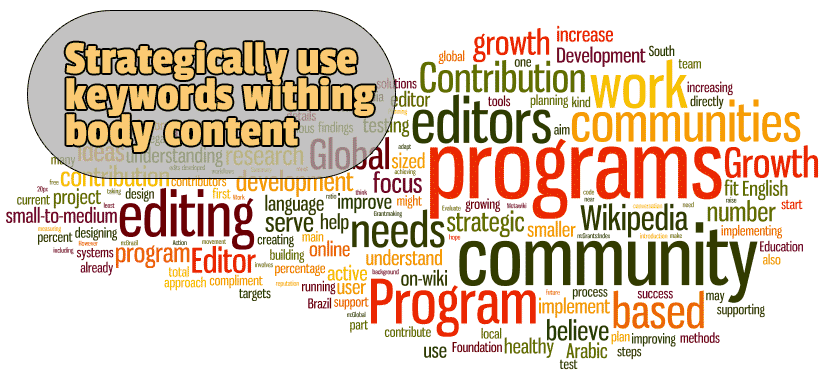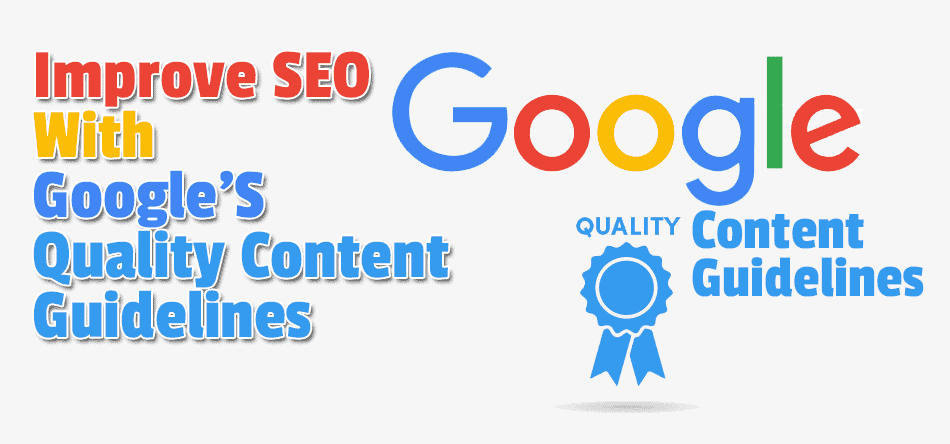Do you have SEO in mind when writing content for your website? Most do.
In fact, despite content being the most important component of one’s online presence, people are ready to pay less attention to the overall purpose their content should solve, and more attention to whether it improves SEO or not.
If you want to make a right balance between improving your search engine rankings and maintaining a higher standard of writing, you may find this SEO checklist for content writing helpful.
The idea of this blog post came to me when I was watching the latest Whiteboard Friday on Moz.com in which Rand Fishkin talks about the SEO checklist for the up coming year 2018 – what all you need to take care of to improve your search engine rankings.
Once you have taken care of the basic SEO necessities on your website, it’s mostly your ongoing content writing that has a positive, or a negative impact on your SEO.
So, when writing content for your website, keep referring to the checklist that I’m putting up in this post. If you are writing content on your own (instead of hiring a professional content writer), keep this checklist nearby.
1. Create an SEO friendly URL
If you are using a CMS like WordPress, it automatically creates the URL using your post title.
Although by default WordPress creates an SEO friendly URL (provided you have changed the default URL settings in WordPress), sometimes it can be too lengthy.
For example, if I let WordPress create a URL for this post automatically, it is going to create something like //credible-content.com/blog/seo-checklist-when-writing-content-for-your-website-in-2018, which, as you can see, is an unnecessarily lengthy URL.
Although there are a few plugins available that can create SEO-friendly URLs automatically, since I don’t want to install another plugin, I’m going to manually write the URL as //credible-content.com/blog/2018-seo-checklist-website-content-writing.
This way, a search engine like Google finds everything it needs to find about the blog post.
2. Do proper keyword research
SEO is incomplete without keywords.
It’s the keywords that tell Google what you are writing about.
How should you choose your keywords?
Whenever you are writing content for your website, always keep the searcher’s intent in mind.
What is he or she is looking for?
If he or she is looking for some information, is the content you are currently working providing that information?
Suppose you search for “SEO checklist for writing content”, or “SEO content writing checklist” and then you come to this blog post.
Are you getting the information you were looking for?
Does this blog post give you an SEO checklist that you can use for writing content?
Use the keywords people are actually using to find your content.
If it is difficult to find the right keywords use a tool like LongtailPro. Once you have supplied the base keyword (in my case it could be “SEO content writing”) it digs into the Google AdWords database and presents to you all possible keyword variations people are using. It also tells you how many people are actually using those individual keywords so that based on those numbers you can decide whether you want to put in the requisite effort or not.
It is very important that you find the right keywords before you start writing content because you will cleverly need to incorporate the keywords into your content writing.
3. Carefully study the links that are already ranking high for your chosen keywords
Search for your chosen keywords on Google and check out which links are already ranking higher.
Then go to these links and try to find out what is the reason Google is ranking them higher.
How have they arranged the content including text, images, and other components on the web page for blog post?
I’m not suggesting that you copy the content because it is ranking higher, but you can get some ideas from these pages about how to arrange your text and the keywords. Or even how many words and how many images to use.
Though, this alone won’t help you with better rankings because one’s rankings also depend on many external factors like how many quality incoming links the domain has, and what sort of buzz it is able to create on social media. But, it will give you some basic idea of with what you need to compete.
4. Select an appropriate person to write your content
Content writing for your business website is serious stuff. People will decide whether they want to do business with you or not, after reading your content.
Just imagine, missing all those business opportunities simply because you didn’t care enough about the quality and effectiveness of your content.
Tragically, I’ve seen many entrepreneurs losing their businesses because they didn’t invest in an experienced and able content writer.
Do you think people are going to do business with you just because you have setup a website and written a few things about your awesome product or service?
Well, guess what, there are hundreds of businesses like you for your prospective customers and clients to choose from, and on the Internet, it is just a matter of going from one website to another.
On your website, it’s just your written text that can convince people to do business with you. Take it very seriously.
5. Write a compelling title and description
A major part of your visitors will come to your website drawn by the title of your web page or blog post. The entire essence of you message is captured, and even immortalized, by your title.
Your title is as important, and in terms of getting attention and clicks on search engines and social channels, even more important, than the remaining body text.
No matter how great your body text is, if you have a very uninspiring and meaningless title, few people are going to pay attention to it.
Therefore, a big part of your SEO is affected by your title.
Make sure you use your main keyword in your title. Don’t repeat it, just use it once, preferably at the beginning.
Rand says that the “description” meta tag still matters and can affect your search engine rankings.
Many SEO experts say that the description doesn’t matter these days, but if Rand contradicts them, we should take him seriously.
Besides, it’s your meta description that shows up below your hyperlink in the search results, not just random text, so it should have some bearing on your search results.
An update about writing meta descriptions: Conventionally, you can use 160 characters when writing a meta description for your website, web page or blog post. According to the recent updates I’m getting and I have also seen it myself, Google is now allowing 360 characters for meta descriptions.
6. Strategically use the keywords within the body text
Your body text, yes, the main component of your content writing – the actual content writing.
Everything said and done, the ultimate impact is made through the main body of your web page or blog post.
Whatever you have to say, whatever you must deliver, you do it through the main body content.
The Google ranking algorithm carefully studies your body content to assess its meaningfulness.
Every message needs words, and words give meaning to what you are communicating. Without words, there is no message, there is no communication.
Keywords are the indicators that tell Google what you are writing about. If they are important, you use them more frequently than other words.
For example, if I use “content writing” multiple times in this post Google will have some idea that it is one of the main points of my write-up.
If I also mention “SEO checklist” Google may deduce that the post contains some SEO checklist for content writing, and consequently, may decide to rank this post higher when people look for some “content writing SEO checklist”, or something of that sort.
How do you use your keywords within your body text?
I generally keep in mind the following rules of thumb:
- Use your main keywords within the first 100 words. Use them as they are, and then break them in various parts and use those parts individually.
- Use a smattering of LSI keywords. LSI stands for Latent Semantic Indexing. These are the keywords that are related to your primary keywords. Sometimes people mistakenly think that LSI keywords are synonyms of the primary keywords. They are not, they are related keywords, keyword that the Google algorithm thinks should be present in the vicinity of your main keywords.
- Use your primary keywords every 200-300 words.
- Use your keywords or their combinations within headings and subheadings – not every heading and subheading, but at least a few.
- Use your keywords in the last paragraph.
7. Make sure your web page loads fast
Although this has less to do with content writing and more with the general SEO configuration of your website, while using images for your current piece of content, you can make sure that the images are optimized, and they are made as light as possible.
For more information on this you may like to read How to use images for link building.
8. Connect with influencers to spread your content
You write this great content so that the maximum number of people can benefit from it, right?
People can benefit from you content only if they can find it.
If your content enjoys higher search engine rankings and if people are actively looking for what you have published, then you can easily reach your target audience.
What if your rankings are not good yet?
What if people don’t know how valuable content you are writing and publishing?
Influencers in your niche can help you spread the word.
If you enjoy a good rapport with your industry influencers, they will gladly share your content on their social media and social networking timeliness.
They may even link to your content from their websites and blogs.
Connecting and networking with industry influencers takes time, effort, and above all, persistence.
But once you have created a solid network of industry influencers, it will be a lot easier for you to distribute your content.
My personal suggestion for writing content in 2018 and beyond
Focus on quality and purposefulness. Whenever you create a web page or a blog post, it should solve a purpose. It should have a reason to exist. It should deliver something solid.
As I’ve mentioned above, the idea of this “SEO checklist when writing content” came to me when I was watching Rand Fishkin’s Whiteboard Friday on creating an SEO checklist.
He talks from the perspective of an SEO expert in the video.
In my writeup I have mostly covered these SEO checklist points from the perspective of content writing because content writing and content marketing is what I do, and I help my clients improve their SEO with this very service.










